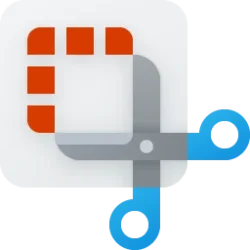The official docs from Microsoft already confirm, and re-affirm, that this "straw man" that you report seeing is really just a figment of your imagination.Creating a "straw man" and then cutting it down doesn't really prove anything.
From where you sit, maybe it looks to be reliable. But where I sit, looks can be deceiving. This reminds me of the movie titled "Pitch Black". (Specifically, the scene where Vin Diesel says, "I said it looks clear"... lol)I completely disagree with the premise of the poster's discussion. I particularly enjoyed the statement "Just because you are still able to boot into your Windows normally after you restore from image and all your apps still seem to be working OK, doesn't make it a reliable method in any way, shape or form." From where I sit this seems like this IS a valid description of "reliable."
You can disagree all you want, it still won't change the facts. One of these facts is that it is the user's responsibility to test and verify that no application-inconsistent data that can be problematic will be contained in hot backups. Another fact is that it takes advanced skills to develop reliable testing methods that let you achieve that goal. Another fact is that the average home user, very unlike the IT pro who, like me, has been doing this stuff for a living for the past 15 years or maybe longer, almost never requires to make hot backups anyway in the first place. To the average home user who, for whatever the reason might be, wants to make a system backup still nevertheless, the cold backup method is the recommended choice exactly because he/she typically doesn't know how to reliably avoid problems associated with making hot backups. Sure, in the vast majority of cases this is not an actual concern. But then, the only way to make it reliable is to eliminate that which has the potential to, under some circumstances even if they are rare, become an actual concern.And I must disagree with this quote, "The only reliable way to make a backup of your Windows system partition is to make sure that the instance of Windows, that has been installed on this partition, is shut down first." Most of us have been using Reflect for many years, using default settings and making images of partitions and disks, with complete success.
Finally, the typical average home user doesn't even require to make frequent system backups, hot or cold, and, the vast majority of such people don't even require to make any system backups at all. Ever. Of course you can choose to do it anyway, just like you can choose to make hot backups (as opposed to make cold backups) to avoid the necessity to boot into the bootable Rescue Media environment of whatever the imaging software you use for this specific purpose or goal. But if, as an average home user, you never make cold backups, then if the reason why you aren't making any is simply because you're making hot backups frequently instead. Then no. Just no.
Trust me, there are a lot of people to whom the official docs from Microsoft don't make any logical sense. So, you're not alone. lol Sorry, but that's just the way things are (and always have been). By mere definition alone, the term "reliability" concludes that you should put a reasonable effort to avoid the potential risk of running into additional problems. The effort and time spent on temporarily turning off Secure Boot and BitLocker (the latter being rather useless to the average home user because any half experienced hacker can break in to it with relative ease... it just takes some time to bypass is all), booting from the USB flash drive and waiting for the backup task to successfully complete before you can boot back into your Windows is only a small price to pay, when you only need to do it a few times per year.We load Marcruim Reflect, tell it to make an image of a drive or partition, and start the process. We don't shut down Secure Boot, we don't touch Bitlocker, we just start the process and let it conclude. If our systems get hose and don't permit booting we just plug in the rescue disk we made long ago and restore the last image. I can't "imagine" what he's talking about so I must be missing something this poster is trying to convey as his digression doesn't make any sense to me. I've tried other programs (Acronis, AOME, etc.) and none are as simple to use. I'll stick with Reflect free until an operating system is made that is not compatible with the free version.
TBH, if you are toying with your Windows Settings and/or various app settings so frequently that making a system backup only every so many months is still not enough for you, then probably you should be looking into different methods to replicate and export/import your settings. The typical average home user does not. (You certainly don't need imaging software like Macrium Reflect to back up all your important personal files, as a system backup doesn't need to include any such files.)
My Computers
System One System Two
-
- OS
- 11 Home
- Computer type
- Laptop
- Manufacturer/Model
- Asus TUF Gaming F16 (2024)
- CPU
- i7 13650HX
- Memory
- 16GB DDR5
- Graphics Card(s)
- GeForce RTX 4060 Mobile
- Sound Card
- Eastern Electric MiniMax DAC Supreme; Emotiva UMC-200; Astell & Kern AK240
- Monitor(s) Displays
- Sony Bravia XR-55X90J
- Screen Resolution
- 3840×2160
- Hard Drives
- 512GB SSD internal
37TB external
- PSU
- Li-ion
- Cooling
- 2× Arc Flow Fans, 4× exhaust vents, 5× heatpipes
- Keyboard
- Logitech K800
- Mouse
- Logitech G402
- Internet Speed
- 20Mbit/s up, 250Mbit/s down
- Browser
- FF
-
- Operating System
- 11 Home
- Computer type
- Laptop
- Manufacturer/Model
- Medion S15450
- CPU
- i5 1135G7
- Memory
- 16GB DDR4
- Graphics card(s)
- Intel Iris Xe
- Sound Card
- Eastern Electric MiniMax DAC Supreme; Emotiva UMC-200; Astell & Kern AK240
- Monitor(s) Displays
- Sony Bravia XR-55X90J
- Screen Resolution
- 3840×2160
- Hard Drives
- 2TB SSD internal
37TB external
- PSU
- Li-ion
- Mouse
- Logitech G402
- Keyboard
- Logitech K800
- Internet Speed
- 20Mbit/s up, 250Mbit/s down
- Browser
- FF







